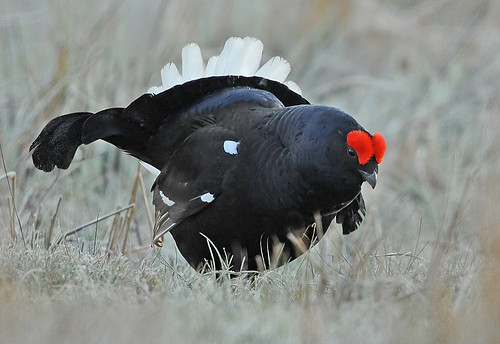This is not good, and I get no enjoyment from creating this post which is to report a week completely void of any birding, depressing stuff and I can't go on like this, things must change....and soon or else.
Floods have been the areas to check recently, though a flood anywhere anytime is always worth a check and if you live in the same area as I do one at Aldcliffe is as good as they come. But three particular floods have been in the news in the past few days, and all have hosted some 'good birds'.
Wood Sandpiper Dave Appleton
A flood viewed from Lancaster Road near to Lousanna Farm at Out Rawcliffe - which I know well and drove past many hundreds of times during my days delivering car parts - held a nice Wood Sandpiper this week along with a number of Ruff which reached a double figure in one report I saw. Another Wood Sandpiper was present during the week on another flood at Todderstaffe Hall on the Fylde. I can offer no accurate number but I recall going into the Allan Hide at Leighton Moss with John Leedal one day to find c.8 Wood Sandpiper together, a record I never equalled since....Thanks for the photograph Dave.
Pectoral Sandpiper Colin Bushell
On yet another flood NW of Garstang and east of Lathwaite, a Pectoral Sandpiper was present this week too with another on Banks Marsh. The Pectoral Sandpiper is the most numerous Nearctic wader on this side of the Atlantic, in excess of 1,400 were noted between 1958-85 an average of over 50 birds a year. The one in the image above was in Manu, Peru 2010....Thanks for this Colin.
Lesser Snow Geese Geoff Gradwell
I think the biggest 'Lancashire' surprise of all this week was the appearance of Lesser Snow Geese on the Fylde coast where the number peaked at thirteen at Cockers Dyke on Pressall Sands. The image above is of seven of these thirteen birds which were also over Rossall Point at Fleetwood...Thanks Geoff.
And finally....
Common Sandpiper Antonio Puigg
I wonder if the Common Sandpiper will winter again at Conder Green, this bird was photographed 'nodding off' recently in Spain....Many thanks Antonio.
And the MEGA news today was of a Yelkouan Shearwater past Whitburn Steel in Co.Durham.
And the MEGA news today was of a Yelkouan Shearwater past Whitburn Steel in Co.Durham.
I'D SOONER BE BIRDING....NEXT WEEK OR ELSE!!
.JPG)



.jpg)












.jpg)








.JPG)

.jpg)



















